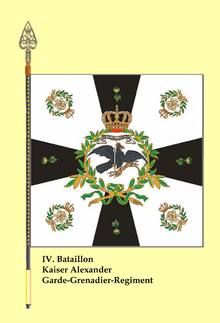
A grenadier was historically an assault-specialist soldier who threw hand grenades in siege operation battles. The distinct combat function of the grenadier was established in the mid-17th century, when grenadiers were recruited from among the strongest and largest soldiers. By the 18th century, the grenadier dedicated to throwing hand grenades had become a less necessary specialist, yet in battle, the grenadiers were the physically robust soldiers who led vanguard assaults, such as storming fortifications in the course of siege warfare.
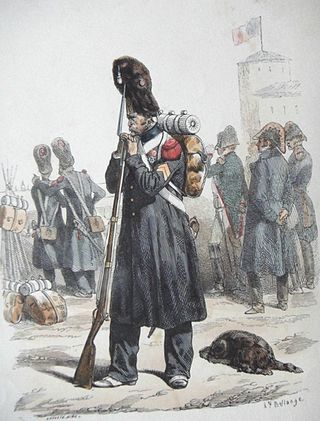
The Imperial Guard was an elite guard formation of the French Imperial Army under the direct command of Napoleon. Expanding considerably over time, the formation acted as his bodyguard and tactical reserve, and he was careful of its use in battle. The Imperial Guard was divided into a general staff and infantry, cavalry and artillery regiments as well as battalions of sappers and marines. It distinguished between experienced veterans and less experienced members by being separated into three sections: the Old Guard, Middle Guard and Young Guard. The Young Guard was virtually annihilated in the Battle of Krasnoi during the French invasion of Russia.
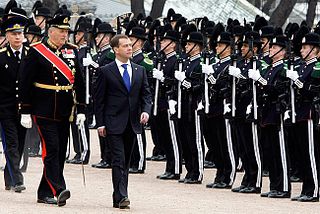
In some militaries, foot guards are senior infantry regiments. Foot guards are commonly responsible for guarding royal families or other state leaders, and they also often perform ceremonial duties accordingly, but at the same time are combat soldiers.

Fusilier is a name given to various kinds of soldiers; its meaning depends on the historical context. While fusilier is derived from the 17th-century French word fusil – meaning a type of flintlock musket – the term has been used in contrasting ways in different countries and at different times, including soldiers guarding artillery, various elite units, ordinary line infantry and other uses.

III Corps was an army corps of the British Army formed in both the First World War and the Second World War.

Ludwig Alexander Friedrich August Philipp Freiherr von Falkenhausen was a German officer most notable for his activities during World War I.
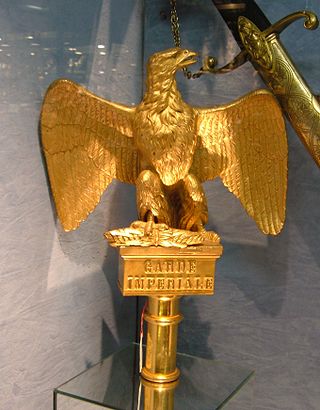
The French Imperial Eagle refers to the figure of an eagle on a staff carried into battle as a standard by the Grande Armée of Napoleon I during the Napoleonic Wars.
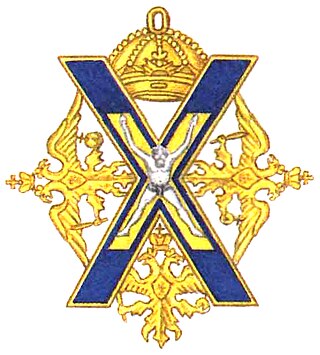
The Preobrazhensky Life-Guards Regiment was a regiment of the Imperial Guard of the Imperial Russian Army from 1683 to 1917.

Frederick II was the last sovereign Grand Duke of Baden, reigning from 1907 until the abolition of the German monarchies in 1918. The Weimar-era state of Baden originated from the area of the Grand Duchy of Baden.
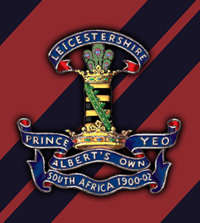
The Leicestershire Yeomanry (Prince Albert's Own) was a yeomanry regiment of the British Army, first raised in 1794 and again in 1803, which provided cavalry and mounted infantry in the Second Boer War and the First World War and provided two field artillery regiments of the Royal Artillery in the Second World War, before being amalgamated with the Derbyshire Yeomanry to form the Leicestershire and Derbyshire (Prince Albert's Own) Yeomanry in 1957. The regiment's lineage is currently perpetuated by E (Leicestershire and Derbyshire Yeomanry) Squadron of the Royal Yeomanry.

There are 13 cavalry Regiments of the British Army each with its own unique cap badge, regimental traditions, and history. Of the currently nine regular cavalry regiments, two serve as armoured regiments, three as armoured cavalry regiments, three as light cavalry, and one as a mounted ceremonial regiment. There are also four yeomanry regiments of the Army Reserve, of these, three serve as light cavalry and one as an armoured regiment. Each yeomanry light cavalry unit has been paired with a regular unit of the same role, the armoured yeomanry unit is paired with the two regular armoured units. All except the Household Cavalry are part of the British Army's Royal Armoured Corps.
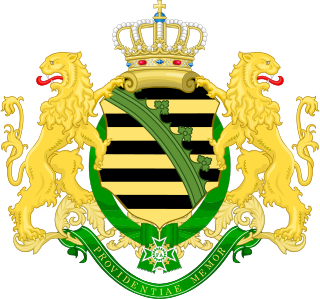
The Royal Saxon Army was the military force of the Electorate (1682–1807) and later the Kingdom of Saxony (1807–1918). A regular Saxon army was first established in 1682 and it continued to exist until the abolition of the German monarchies in 1918. With the formation of the Confederation of the Rhine by Napoleon the Royal Saxon Army joined the French "Grande Armée" along with 37 other German states.

The Grenadier Guards is the most senior infantry regiment of the British Army, being at the top of the Infantry Order of Precedence. It can trace its lineage back to 1656 when Lord Wentworth's Regiment was raised in Bruges to protect the exiled Charles II. In 1665, this regiment was combined with John Russell's Regiment of Guards to form the current regiment, known as the 1st Regiment of Foot Guards. Since then, the regiment has filled both a ceremonial and protective role as well as an operational one. In 1900, the regiment provided a cadre of personnel to form the Irish Guards; while later, in 1915 it also provided the basis of the Welsh Guards upon their formation.

The Guards Division was an infantry division of the British Army that was formed in the Great War in France in 1915 from battalions of the Guards regiments from the Regular Army. The division served on the Western Front for the duration of the First World War. The division's insignia was the "All Seeing Eye".
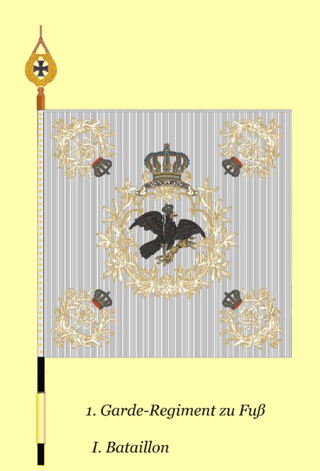
The 1st Foot Guard Regiment was an infantry regiment of the Royal Prussian Army formed in 1806 after Napoleon defeated Prussia in the Battle of Jena–Auerstedt. It was formed by combining all previous Foot Guard Regiments, especially the 6th and the 15th Infantry Regiments of the Old Prussian Army, the former were the famous Potsdam Giants of Frederick William I of Prussia, the latter was commanded and led by Frederick the Great as his life guard, and was, from its inception, the bodyguard-regiment of Kings of Prussia. Save William II, who also wore the uniforms of other regiments, all Prussian Kings and most Princes of Prussia wore the uniform of the 1st Foot Guard Regiment. All Princes of Prussia were commissioned lieutenants in the 1st Foot Guards upon their tenth birthdays. The King of Prussia was also the Colonel-in-chief of the regiment, as well as the Chief of the 1st Battalion and 1st Company of the regiment. Therefore, the regiment held the highest rank within the Prussian Army, which, among other things, meant that the officer corps of the regiment marched before the princes of the German Empire and the diplomatic corps in the traditional New Year's reception. Unofficially, the regiment was known as the "First Regiment of Christendom".

Max Ferdinand Karl von Boehn was a German officer involved in the Franco-Prussian War and World War I. He held the rank of Generaloberst in World War I.

The 1st Regiment "Granatieri di Sardegna" is an active unit of the Italian Army based in Rome in Lazio. The regiment is part of the army's infantry arm's Granatieri (Grenadiers) speciality and assigned to the Mechanized Brigade "Granatieri di Sardegna". Formed in 1659 the regiment is the currently oldest active unit of the Italian Army and the most senior regiment in the Italian Army's infantry order of precedence. Together with its sister the regiment, the 2nd Regiment "Granatieri di Sardegna", the regiment is the guard regiment of Rome.

The 2nd Regiment "Granatieri di Sardegna" is an active unit of the Italian Army based in Spoleto in Umbria. The regiment is part of the army's infantry arm's Granatieri (Grenadiers) speciality and assigned to the Mechanized Brigade "Granatieri di Sardegna". Formed in 1744 the regiment is the second-most senior regiment in the Italian Army's infantry order of precedence. Together with its sister the regiment, the 1st Regiment "Granatieri di Sardegna", the regiment is the guard regiment of Rome.

The 3rd Regiment "Granatieri di Sardegna" is a unit of the Italian Army's infantry arm's Granatieri (Grenadiers) speciality. The regiment was active for a short time in 1849 during the First Italian War of Independence and then reformed in 1926 and assigned to the Infantry Division "Granatieri di Sardegna". In 1935-36 the regiment's I Battalion fought in the Second Italo-Ethiopian War. In 1939 the regiment became an autonomous unit and moved to Tirana in occupied Albania. There the regiment was renamed 3rd Regiment "Granatieri di Sardegna e d'Albania" and participated in the Greco-Italian War. For its conduct during the war the regiment was awarded Italy highest military honor the Gold Medal of Military Valor. After the announcement of the Armistice of Cassibile on 8 September 1943 the regiment was disbanded by invading German forces.
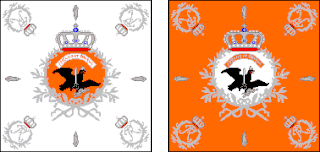
The 1st Prussian Infantry Regiment was a line infantry regiment of the Old Prussian Army which had initially formed part of the Prussian Life Guard, but later transferred to the line. After notably serving in the War of the Austrian Succession and Seven Years' War, the regiment was demolished following the Battle of Auerstadt. A small part of the regiment went on to help form the famed 8th Life Infantry Regiment, which in turn would serve notably till its disbandment after World War I.
